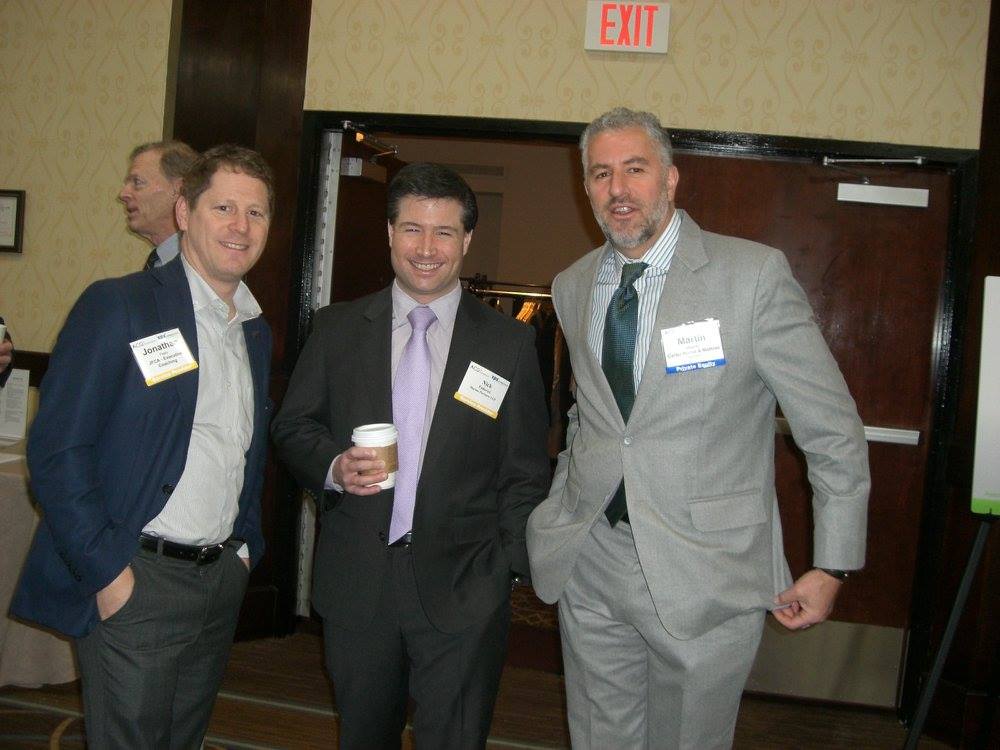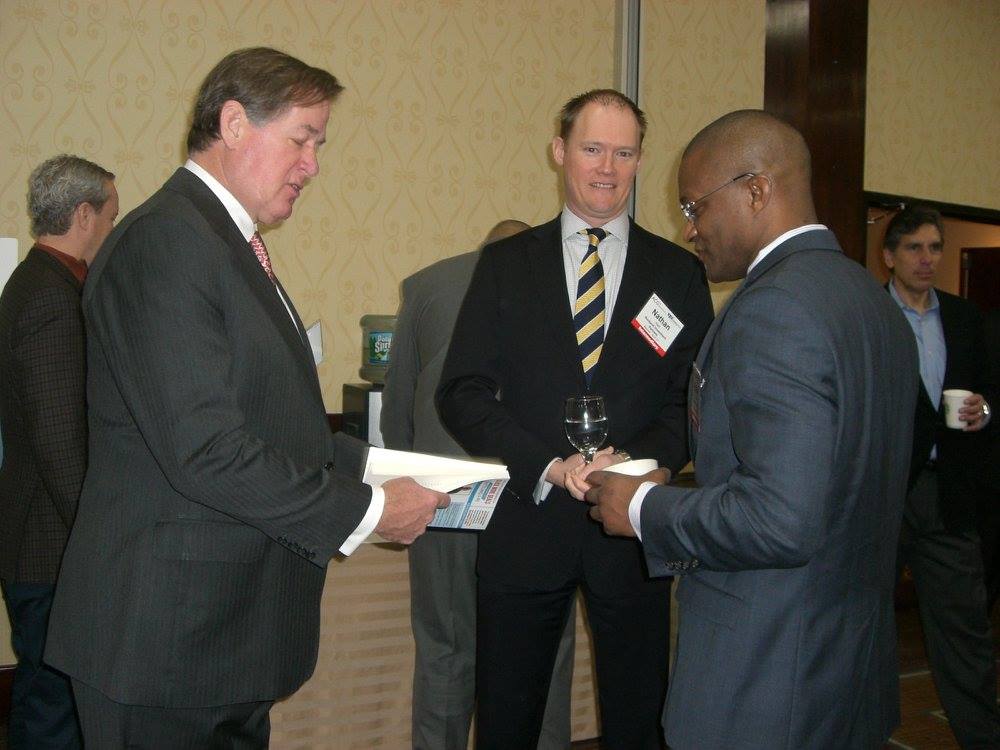Tri-State Sponsors
Gold
Silver
Buy or sell-side due diligence is needed. You need a part-time or interim CFO.The CFO needs to improve accounting operationsThe company needs a new accounting system.
Bronze
Business owners need to prepare their financial, operational and technical systems for a sale and when buyers have identified an acquisition target for diligence.
You need a professional to discuss your business ownership exit planning options.
Gold
Gold Sponsors
Gold Sponsors
Silver Sponsors
You are seeking financing to buy a business, or to pre-qualify a business for an upcoming sale.
you or your client seeks patient capital for expansion, acquisition, equipment, real estate and/or a second opinion on current financing strategy and structure.
Bronze Sponsors
A business owner is contemplating a transaction (Financing, Sale or Acquisition), even years in advance of a transaction so we can help the owner maximize shareholder value.
XPX Chapters
Join Us As a Full Member!
If you are an advisor to owners and managers of companies in the lower middle market, XPX can be a powerful learning network for you! Our members represent twelve different professions but share core principles of collaboration, putting the client first, thinking long term, considering the human angle and continuous learning. Learn more about our membership benefits and options.
Power of Three
One of our Chapter’s most popular offerings is our Power of Three Networking Program. This members-only benefit brings together small groups of advisors from different disciplines and provides a series of structured meetings so you can get to know each other on a much deeper level than you can at your average networking meeting.
Interested in learning more? Please contact us.
XPX Open Mic Night: How to Turn your Biggest Losers into Winners
XPX CT and ACG CT Meeting








Advisor Professions
Accountants
Attorneys
Bankers
Coaches
Consultants
Insurance Providers
Investors
M&A Intermediaries
Non-Profits
Valuators
Virtual managers
Wealth Planners
The Latest News – XPX Hartford
Latest – XPX Hartford
“Conflicts look bad. I always prepare touchy agenda points with my 2 senior leaders before leadership team meetings. This way senior leadership presents a united front,” recently mentioned the CEO of a 200-people company. Most leadership teams have too few open, healthy conflicts. This makes them less effective, reduces decision quality, and ultimately slows down business growth. How can you step outside of your comfort zone and mine more healthy conflicts? Healthy conflicts help propel your business forward Many CEOs stick to their comfort zone: you avoid some conflicts and embrace other, based on your natural conflict style – not based on what is best for your business. Artificial harmony created by conflict avoidance is treacherous, as this
How many decisions do you make every day? According to Cornell University
It’s midnight. Your recycling bin is overflowing with rejected resumes. Your eyes can barely focus on the letters in front of you — and you have this uneasy feeling that you are about to invest in another candidate who just isn’t going to work out. This has been a vicious cycle over the past several years, and you find yourself asking yet again,” Why can’t I find the right salespeople?” You’ve spent an excessive number of hours and are well into six figures in budget dollars hiring, training, firing, and rehiring. You’re losing credibility in the marketplace because your customers are continually being introduced to new reps. With each salesperson that doesn’t work out, you can feel your employees questioning your leadership and the direction the company is headed. And this last candidate… they checked every single box. An ideal candidate with a promising start. Industry experience. Excellent references. High performance everywhere they went. You gave them everything they wanted only to discover they weren’t what they appeared to be. How could you have been so wrong about yet another candidate, a supposed “A-Player” who just couldn’t deliver the level of success they promised in the interview. Instead of burying yourself in another pile of seemingly perfect resumes, it might be time to take a step back. Key Article Takeaways: · Pitfalls that prevent A-players from performing in a new sales environment · How to lay out a sales roadmap to generate consistent results · Key sales leadership focus areas that pay dividends Time to Slow Down to Speed Up Some organizations seem to have it all figured out: low sales turnover; tremendous growth; happy employees doing what they love. Sure, when things go right, everyone is happy. But when issues continuously arise that take your top salespeople away from their outbound calls to chase down problems or they are struggling to know where to focus their effort, there’s likely a more significant issue at hand. By all means, keep searching for the best and brightest salespeople – the ones you know have the talent and desire to excel in your organization. But before you get too far in the process, take a step back and examine your sales readiness. · Are you setting your salespeople up for success right off the bat? · Are there things you know you could do better but haven’t had the time to fix? · Are you doing everything you should be to create a sales culture that allows anyone you hire the opportunity to see success? Structure: Another pitfall that can derail even the best A-Player is when an organization does not have the proper infrastructure to support its sales efforts. This encompasses a wide range of elements from staff structure to the necessary systems to measure and manage performance. For example, creating clear lines of accountability for all roles and functions that interface with the customer will bring clarity to performance expectations. This prevents time-consuming distractions and fosters a customer centric culture. Another area of structure involves the method in which your prospect and customer segments are designated and managed. This provides your customers with a consistent experience and enables your sales resources to be positioned in their areas of strength. These best practices create a solid platform for your salespeople to work from. Then, layering on the appropriate systems to capture sales activity, report on key metrics, manage sales pipeline, etc., allows you and your leadership team the critical visibility needed to keep a pulse on how the business is progressing toward its goals. As you assess your performance in this area, consider the consistency of your weekly one-on-one sales meetings for individual planning and mutual accountability. Given the reliance of the salesperson on their sales manager, powerful outcomes are produced when both sides are willing to be accountable to the other. Another important area to review is the level of value your sales meetings deliver to the team. Lastly, keep track of how often you participate in sales calls — both in-person and video calls, and how often you are creating powerful learning moments for your reps through these interactions. Are you struggling to find the time to apply this level of focus? Do you recognize there are times when you aren’t sure how to confidently lead and develop your salespeople? These common needs in small to mid-sized businesses were the driver behind my decision to transition my extensive VP Sales background to help top executives on a fractional or interim basis. If you’d like to have a preliminary discussion about the sales challenges you are facing, please feel welcome to contact me through any of these methods: 413-626-7040 , kdonovan@salesxceleration.com or book a call through my
“I should demote myself!” joked the head of sales. “It looks like I am better at selling than at managing a sales team.” We were looking at his team’s individual sales numbers. He was selling more when he was a regular salesperson than his whole team today. We too often promote the wrong person into a senior leadership position. The reason is: the promotion criteria we use are poor predictors of people’s leadership potential. How can you better identify potential senior leaders and avoid painful mistakes – so you can grow faster and with less pain? Why are we so bad at promoting the right people into leadership positions? We are all biased. We tend to overestimate specific traits we mistakenly believe indicate leadership potential. Common biases include: Past successes. Unfortunately prior performance is not a good predictor of leadership performance.
Homogeneity among your leadership team is like a decadent creamy chocolate cake: it feels tempting, but when you resist it, you get in much better shape. Increasing diversity on your leadership team leads to better decisions – and better financial results. However we have a natural tendency to surround ourselves with people similar to us: diversity is harder. How do you know whether your leadership team is diverse enough? Why is diversity important? Plenty of research has demonstrated that increasing diversity on your team enhances your top and bottom lines. Among others, as this
“You don’t belong here: you are a fraud! Why would smart people ever want to listen to you?” whispered the manager to the salesperson. Galvanized by this wake-up call that he desperately needed, the employee rose to the occasion and exceeded all expectations. Does this sound realistic? Of course not! Who would feel upbeat by such senseless, demotivating speech? This scenario obviously never existed – and yet the speech is 100% authentic: I heard it from a sales executive last week. It wasn’t directed at a team member though: it was directed at himself. Your inner critic: your #1 judge. We all have an inner voice that continuously judges us. Its main message varies from person to person; in next week’s newsletter, we will see how to identify your inner voice’s main messages. In this week’s newsletter, we will discuss its negative impact on yourself and on your ability to grow your business, and what to do about it. One of my client CEOs’ inner voice calls him a “loser who sets the wrong example to his team and will never be a successful entrepreneur” when he doesn’t take over what his team members fail to accomplish. My inner voice calls me “lazy and complacent who will fail as an entrepreneur and a father” when I am idle for more than 2 minutes, even on vacation – and makes me feel guilty and shameful every single time it happens. Our inner critic pretends to be helpful and necessary to our success, but its long-term impact is unequivocally negative. Why do we keep listening to our inner critic, even though it is obvious that its message is utterly uninspiring and demotivating? What can we do about it? How does your inner critic afflict your performance? Our inner critic constantly finds faults with self (for past mistakes or current shortcomings), with others, and with circumstances. This judge sounds helpful at first sight by shedding light on our shortcomings. While it has the appearance of a helper, it is a bully that blackmails us with shame and guilt, with pretty dramatic consequences in the long run. It tells you: “Without me pushing you, you will be unworthy of love / attention / success.” Your inner critic negatively affects you in three significant ways: Your inner critic has a long-term damaging impact on your own performance. Your inner critic acts like a radioactive armor: it pretends to be protective but its long-term impact on your performance is always disastrous. Let’s get back to the two examples above: Client CEO: To respond to the guilt of not being the ideal leader his inner critic describes, this CEO feels the pressure from his inner critic to micro-manage his team when they don’t deliver, at the risk of becoming his company’s #1 growth roadblock – with the negative consequences on his team and on business growth that you can imagine. In response to my guilty feeling of missing out on learning opportunities for my children (and hence of not being a good father) if I am idle on vacation, I take them on high-tempo sightseeing trips (“We only live once, let’s get the most out of it”, right?) – with, here again, the exact opposite long-term impact on my effectiveness as a father. “The inner critic is harmful because it triggers our self-protection mode, MIT Sloan sr lecturer Giardella says in
Contact & Connect
Chapter Events
Tri-State Gold Sponsors
Tri-State Silver Sponsors
Buy or sell-side due diligence is needed. You need a part-time or interim CFO.The CFO needs to improve accounting operationsThe company needs a new accounting system.
Tri-State Bronze Sponsors
You need a professional to discuss your business ownership exit planning options.
Business owners need to prepare their financial, operational and technical systems for a sale and when buyers have identified an acquisition target for diligence.
Gold Sponsors
Silver Sponsors
you or your client seeks patient capital for expansion, acquisition, equipment, real estate and/or a second opinion on current financing strategy and structure.
You are seeking financing to buy a business, or to pre-qualify a business for an upcoming sale.
Bronze Sponsors
A business owner is contemplating a transaction (Financing, Sale or Acquisition), even years in advance of a transaction so we can help the owner maximize shareholder value.
